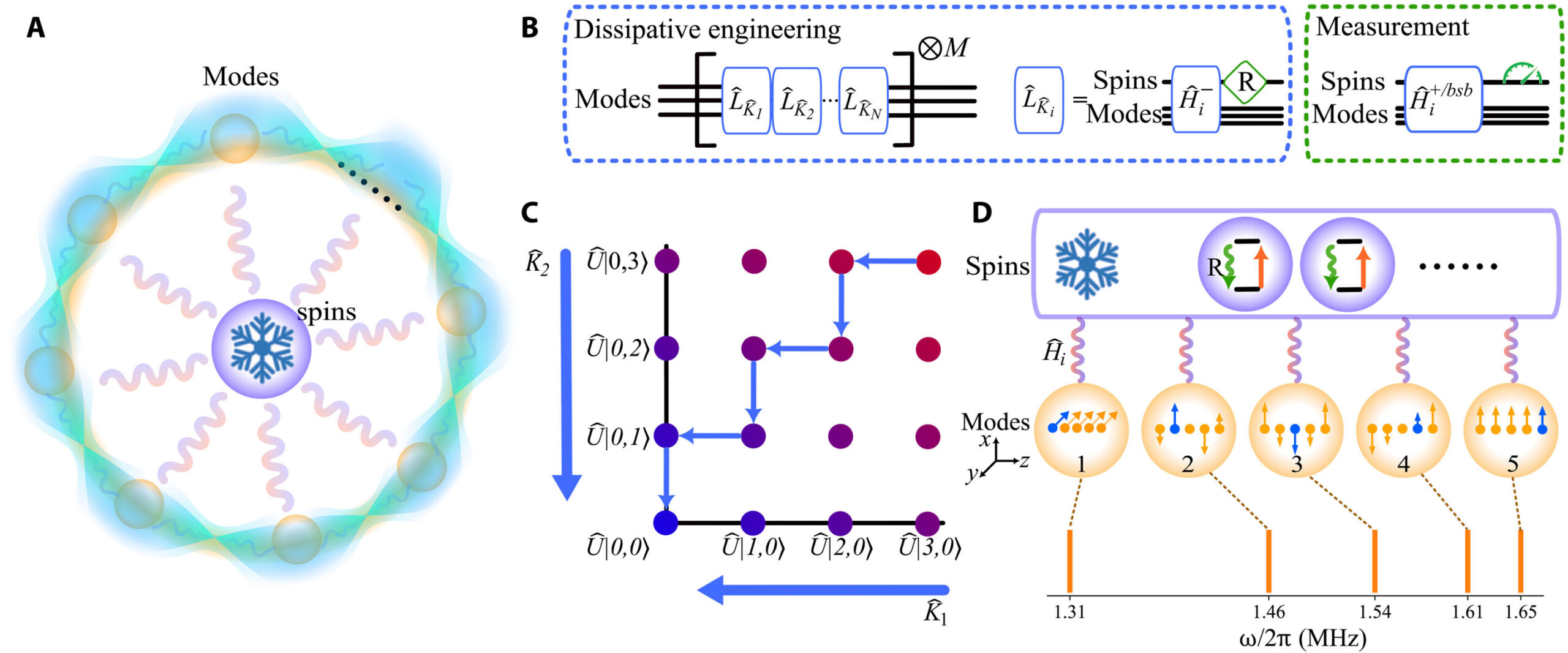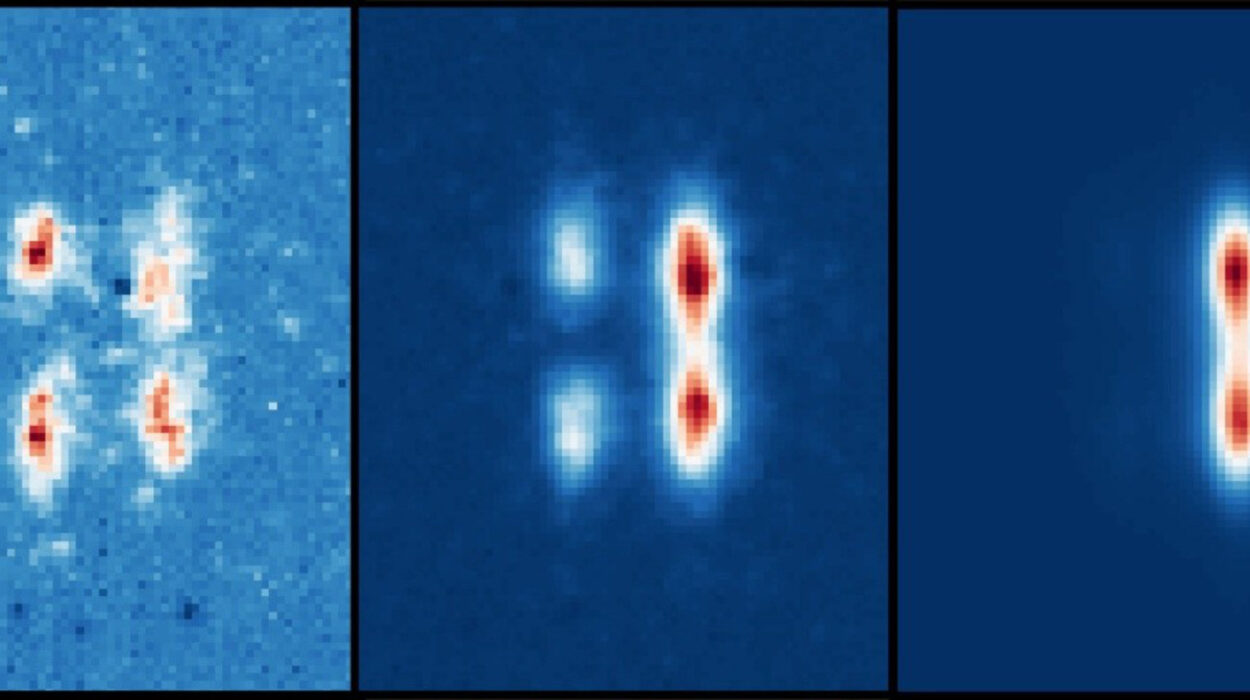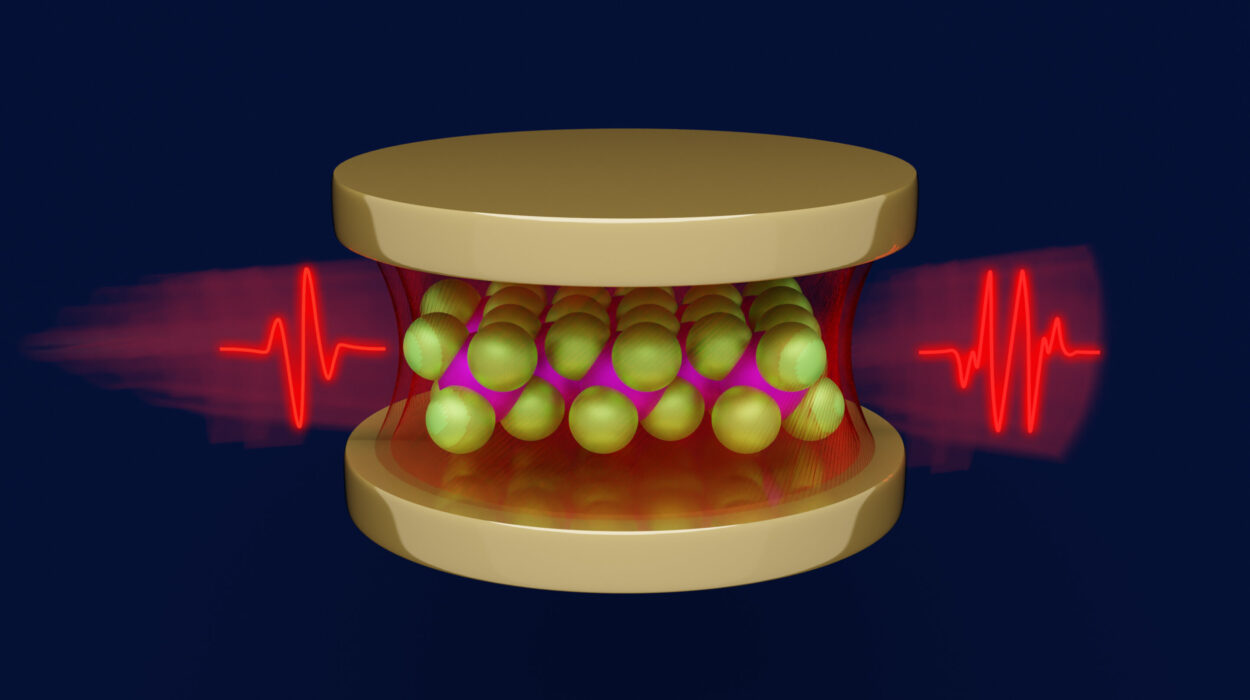At the heart of quantum science lies a paradox. Quantum systems hold the promise of revolutionary technologies — from ultra-secure communication networks to powerful quantum computers capable of solving problems beyond the reach of classical machines. Yet, these same systems are extraordinarily fragile. The slightest interaction with the environment — a whisper of heat, a flicker of vibration, a trace of electromagnetic interference — can destroy the delicate quantum states that make them special.
This natural tendency of quantum systems to lose information through environmental interaction is known as dissipation. For decades, dissipation has been viewed as an obstacle — the ever-present enemy that scientists have struggled to isolate, reduce, or avoid altogether. But what if the very thing that destroys quantum coherence could be transformed into a tool for creating it?
A new study led by Prof. Lin Yiheng of the University of Science and Technology of China (USTC), in collaboration with Prof. Yuan Haidong from the Chinese University of Hong Kong, turns this paradox on its head. Published in Science Advances, their groundbreaking work shows that dissipation — when skillfully controlled — can be harnessed to generate and stabilize entangled quantum states. This research marks a major milestone in quantum physics, offering a new and practical path toward scalable quantum technologies.
The Quest for Quantum Entanglement
Quantum entanglement is one of the most mysterious and powerful phenomena in physics. When two or more particles become entangled, their states become deeply connected — so much so that measuring one instantly influences the other, no matter how far apart they are. Albert Einstein once called it “spooky action at a distance,” but today it forms the foundation of quantum computing, quantum communication, and quantum sensing.
To unlock the full potential of these technologies, scientists must create multimode entanglement — entanglement not just between two particles, but across multiple components, or “modes,” of a quantum system. This allows for complex information processing, error correction, and enhanced precision in measurement.
However, producing stable multimode entanglement has proven notoriously difficult. The more modes are involved, the more sensitive the system becomes to noise and dissipation. Traditional methods try to shield quantum systems from the environment — essentially building perfect isolation chambers. Yet, absolute isolation is practically impossible. Every system, no matter how well protected, interacts with its surroundings to some degree.
That’s where the brilliance of the new approach comes in. Instead of fighting dissipation, the researchers learned to control it — and even use it to their advantage.
Dissipation Engineering: The Art of Turning Loss into Creation
The concept behind this work is known as dissipation engineering. The idea is deceptively simple: instead of treating dissipation as an unavoidable nuisance, it can be engineered to drive the system into a desired quantum state.
In this experiment, the research team used a trapped ion chain — one of the most advanced and precise platforms for quantum control. Ions, which are charged atoms, can be confined and manipulated using electromagnetic fields. Each ion’s internal state (its “spin”) and its motion can be finely tuned using lasers.
By carefully designing the way these ions interact with their environment, the team engineered specific dissipative couplings between the spins and the ions’ collective vibrational modes. In essence, they created a kind of “guided loss” — where energy leaves the system in just the right way to push it toward the target quantum state.
This process resulted in what the researchers called autonomous stabilization. The target entangled state becomes the system’s natural resting place, while all other unwanted states gradually decay toward it. It’s like setting up a landscape where the lowest valley represents the desired quantum configuration — and letting the system naturally roll down into it.
This elegant method turns dissipation into a powerful ally, providing a robust way to generate and maintain quantum entanglement even in noisy environments.
Achieving Multipartite Quantum Entanglement
The team succeeded in producing multipartite entangled states — specifically, entanglement across two, three, and five modes — in the trapped-ion system. These “modes” correspond to different vibrational patterns of the ions, and entangling them means creating deeply correlated quantum behavior across multiple degrees of freedom.
Starting from thermal states (which are noisy and unentangled by nature), the researchers used controlled laser pulses to implement the desired dissipative interactions. The result was a set of highly entangled states known as squeezed states, which exhibit reduced quantum uncertainty in certain measurable properties — a valuable feature for precision measurement and quantum communication.
The quality of these entangled states was remarkably high. Measurements showed fidelities exceeding 84%, meaning the generated states were very close to the ideal theoretical predictions. To confirm the presence of genuine multipartite entanglement, the team applied the van Loock–Furusawa inseparability criteria, a rigorous mathematical tool used to verify complex entanglement across multiple modes.
A Leap Toward Scalable Quantum Systems
One of the most exciting aspects of this achievement is its scalability. By adjusting the coupling between the ions’ internal states and their motional modes, the system can, in principle, be expanded to include more ions — and therefore, more entangled modes.
This scalability opens the door to creating large, stable networks of entangled quantum systems, which are essential for building quantum computers, quantum simulators, and quantum communication networks.
Even more importantly, the principles demonstrated here are not limited to trapped ions. The universality of dissipation engineering means that similar approaches could be applied in other platforms, such as superconducting circuits, atomic ensembles, and nanomechanical resonators. Each of these systems offers unique advantages, and together they form the foundation of the emerging quantum technology ecosystem.
A New Paradigm in Quantum Control
For decades, quantum physicists have worked tirelessly to isolate systems from environmental noise. This new study represents a philosophical shift — from isolation to integration, from avoidance to mastery. By accepting dissipation as part of the quantum landscape and learning to guide it, researchers have discovered a new tool for building stable, scalable quantum devices.
It’s a reminder that progress in science often comes from seeing problems in a new light. What was once seen as destructive — the slow leak of information into the environment — has now become a creative force. Controlled dissipation doesn’t destroy coherence; it sculpts it.
This shift could profoundly influence the design of next-generation quantum systems. Future quantum computers may rely not on perfect isolation, but on self-correcting, dissipation-driven architectures that maintain stability on their own — just as this experiment demonstrated in miniature.
The Promise of a Quantum Future
As quantum technology moves closer to maturity, breakthroughs like this one are essential. The dream of building functional quantum computers, ultra-secure communication networks, and exquisitely sensitive quantum sensors depends on our ability to manage the delicate balance between coherence and noise.
By transforming dissipation from an adversary into a collaborator, Prof. Lin Yiheng and his colleagues have paved the way for a new generation of robust quantum devices. Their work offers not only a technical breakthrough but also a poetic lesson in scientific creativity — that sometimes, the path to progress lies not in resistance, but in harmony.
More information: Yue Li et al, Programmable multi-mode entanglement via dissipative engineering in vibrating trapped ions, Science Advances (2025). DOI: 10.1126/sciadv.adv7838






